Median Arcuate Ligament Syndrome
A 45-year-old man with abdominal pain receives a CT angiogram. CT angiogram demonstrates acute angulation and narrowing of the proximal celiac axis.
Clinical History: A 45-year-old man with abdominal pain receives a CT angiogram.
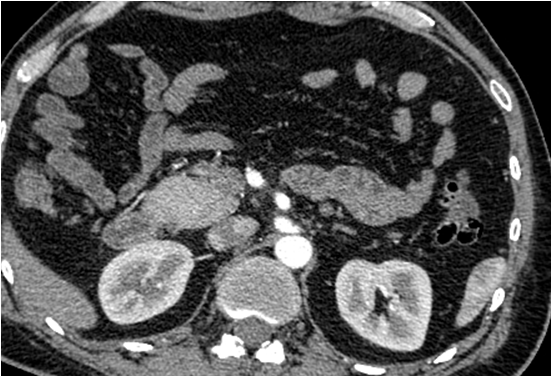
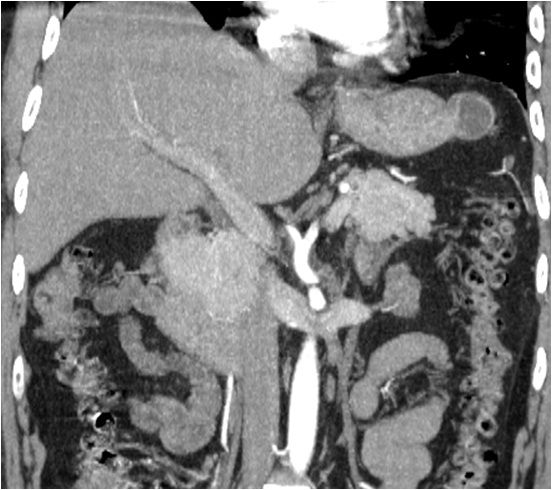
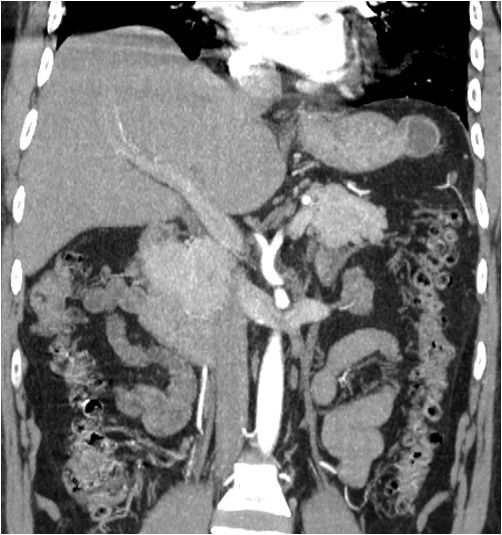
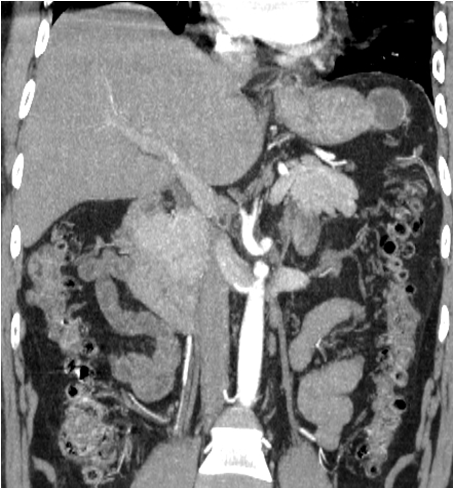
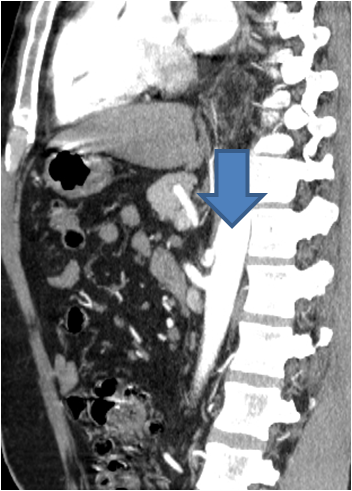
Imaging: CT angiogram with three dimensional reformation demonstrates acute angulation (kinking) and narrowing of the proximal celiac axis. There is minimal poststenotic dilatation, which creates a “hooked” appearance.
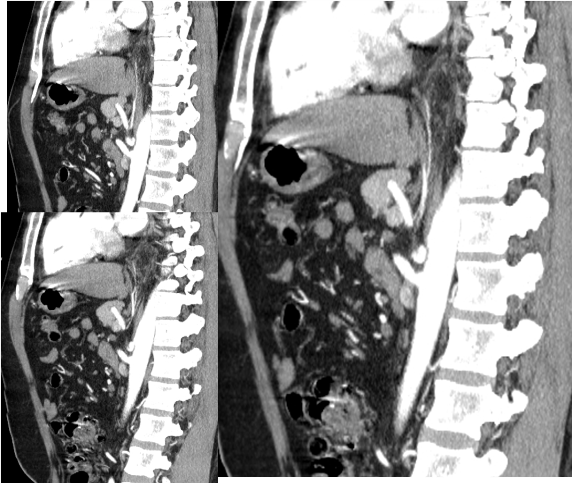
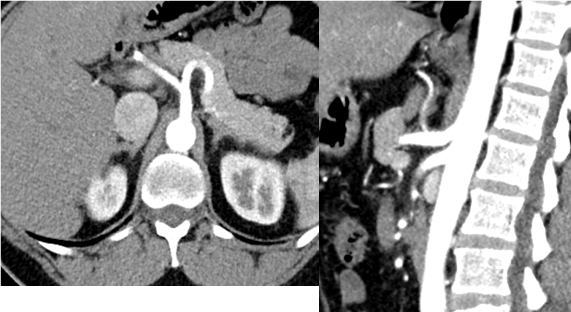
Normal anatomy
Diagnosis: Median arcuate ligament syndrome
Discussion: The median arcuate ligament is a fibrous arch that unites the diaphragmatic crura on either side of the aortic hiatus. The ligament usually passes superior to the origin of the celiac axis. In 10 percent to 24 percent of people, however, the ligament may cross anterior to the artery; in some of these individuals, the ligament may actually compress the celiac axis, compromising blood flow and causing symptoms.
Although the diagnosis of celiac artery compression is traditionally made by using conventional angiography, the use of thin-section multidetector computed tomography (CT) and of 3D imaging techniques has greatly improved the ability to obtain detailed images of the mesenteric vessels noninvasively. Compression of the celiac axis by the median arcuate ligament produces characteristic findings visible at CT angiography, also referred to as celiac artery compression syndrome.
The median arcuate ligament syndrome (or celiac artery compression syndrome) was first described in 1963 by Harjola. The definition of the syndrome relies on a combination of both clinical and radiographic features. It typically occurs in young patients (20 to 40 years of age) and is more common in thin women, who may present with epigastric pain and weight loss. The abdominal pain may be associated with eating, but not always. At physical examination, an abdominal bruit that varies with respiration may be audible in the midepigastric region. Symptoms are thought to arise from the compression of the celiac axis, resulting in a compromise in blood flow.
Median arcuate ligament syndrome is a controversial entity. It is clear that the abnormally low insertion of the median arcuate ligament can be found in normal asymptomatic people. In a small subset of patients, however, the compression of the celiac axis can cause symptoms that may be relieved after surgical decompression. CT angiography can play a role in the diagnosis of this condition by demonstrating the characteristic focal narrowing of the celiac artery in patients presenting with the appropriate clinical symptoms.
References:
http://radiographics.rsna.org/content/25/5/1177.fullhttp://radiology.rsna.org/content/228/2/437.full
Sushila Ladumor, MD, FRCR, consultant radiologist with multi-modality imaging experience, working in Medical Imaging Department, King Abdulaziz Medical City, Riyadh, Saudi Arabia.
MRI Study at ARRS Raises Questions About Disparities in Detection of MASLD
May 3rd 2025New research revealed that Hispanic Americans with evidence of hepatic steatosis on MRI but no formal diagnosis of MASLD had over a fourfold higher risk of developing hepatocellular carcinoma in comparison to those who had a formal diagnosis of MASLD.










